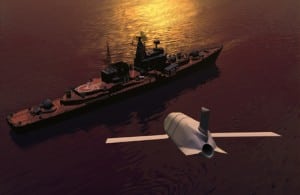L3 Harris Technologies [LHX] said its Aerojet Rocketdyne subsidiary was chosen by Lockheed Martin
[LMT] to provide the propulsion system for the anti-ship Hypersonic Air-Launched Offensive Anti-Surface weapon (HALO).
The Navy seeks to use the HALO hypersonic weapons to help the Navy operate and control contested spaces in anti-access/area denial (A2/AD) environments, which often refers to waters near China.

“We are proud to partner with Lockheed Martin on this important capability, supporting the Navy in its mission to keep the seas open and free. By powering weapons that reach farther, faster, we enable warfighters to remain on the offensive, driving the pace of battle and maintaining the advantage,” Ross Niebergall, president of Aerojet Rocketdyne, said in a statement.
In March, the Navy awarded Lockheed Martin and RTX [RTX] $116 million contracts to start developing their versions of HALO. The preliminary design phase is expected to end in 2024 (Defense Daily, March 29).
HALO is billed as the successor to the Navy’s Long Range Anti-Ship Missile (LRASM) that is currently fielded on the Navy’s F/A-18s and Air Force B-1Bs.
Then, in July, a Navy pre-solicitation notice announced the service intends to release a final Request For Proposals for HALO in the first or second quarter of fiscal year 2024. That document disclosed the Navy expects HALO to start being fielded no later than FY ‘29 for Early Operational Capability and by FY ‘31 for Initial Operational Capability requirements.
In April, a Lockheed Martin official said a main challenge for hypersonic vehicles like these is their size. Steven Botwinik, vice president of advanced programs execution and transition at Lockheed Martin Missiles and Fire Control, said developing a HALO that can be flown on the F/A-18E/F/ Super Hornet and be stored and maneuvered through an aircraft carrier is “tricky” (Defense Daily, April 14).
Botwinik also said at the time that the envelope for HALO is longer than the AGM-158C LRASM.